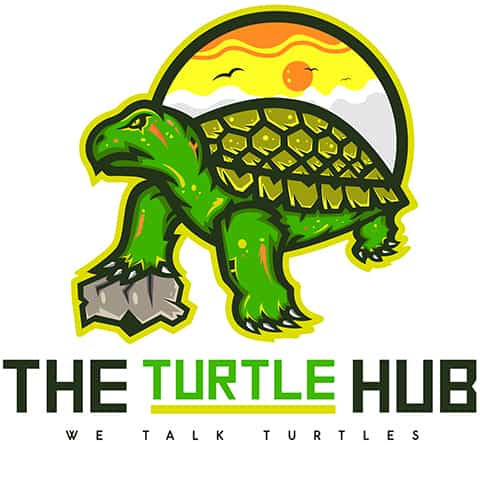Tags:
How Much Food To Feed Baby Turtles?


fact checked & review by
Dr. Partho Kumar Shaha
Veterinarian (DVM)
The information is current and up-to-date in accordance with the latest veterinarian research.
Feeding baby turtles can sometimes feel like a challenging task, with the constant worry of under or overfeeding lingering in the back of your mind. But fear not, as I’m here to guide you through the maze of determining just how much food these little shelled creatures actually need.
Understanding the proper portion sizes and feeding frequency is key to their growth and well-being. Let’s unravel the mystery together and guarantee your baby turtle gets the nourishment they require to thrive.
read all our guides on baby turtle feeding!
Key Takeaways
- Feed baby turtles an amount of food equal to the size of their head and neck at each feeding.
- Offer a variety of foods to ensure a balanced diet rich in necessary nutrients.
- Young turtles need more frequent feedings, gradually reducing as they grow.
- Supplement their diet with calcium or vitamin D3 as needed for shell and bone health.
How Much to Feed Your Baby Turtle?

When determining how much to feed your baby turtle, consider guidelines based on the turtle’s size and species to ensure proper nutrition and growth. Growth monitoring is important during this stage to adjust feeding quantities accordingly.
Nutritional requirements vary among turtle species, so understanding your specific turtle’s needs is essential for their well-being.
Amount of Food:
A common rule of thumb is to feed baby turtles a volume of food equivalent to the size of their head and neck (when extended) at each feeding. This amount should be enough for them to consume within about 15-20 minutes.
Overfeeding can lead to health problems and polluted water, especially in aquarium settings.
Frequency of Feeding:
Young turtles typically require more frequent feedings than adults. It’s recommended to feed baby turtles once a day or even twice a day in smaller amounts. As they grow older, you can gradually reduce feeding to every other day or as recommended for their specific species and size.
Feeding behavior
Feeding behavior can also provide insights into whether the current diet is adequate. Observing how enthusiastically your baby turtle consumes its food can indicate if you’re providing an ideal diet.
Offering a variety of foods, including turtle pellets, small pieces of meat, leafy greens, and occasional insects or worms, can help meet their nutritional needs effectively.
Feeding Schedule and Frequency For Baby Turtles

To establish a well-rounded care routine for baby turtles, understanding the appropriate feeding schedule and frequency is paramount.
When it comes to feeding baby turtles, several key factors need consideration:
- Growth Rates: Baby turtles experience rapid growth, requiring a diet rich in nutrients to support their development properly. Adjust the feeding schedule as they grow to meet their changing nutritional needs.
- Meal Frequency: Feed baby turtles once or twice a day, depending on their size, age, and species requirements.
- Amount: Provide an amount of food that is roughly equivalent to the size of the turtle’s head and neck for each feeding.
- Water Quality: Ensure the turtle’s living environment is clean, especially if feeding occurs within their habitat, to prevent contamination and health issues.
- Supplements: Use calcium and vitamin D3 supplements as recommended, typically 2-3 times a week, to prevent nutritional deficiencies.
- Nutritional Needs: Ensuring a balanced diet that includes proteins, vitamins, and minerals is critical for the health of baby turtles. Offering a variety of foods helps meet their diverse nutritional requirements.
- Feeding Behavior: Baby turtles may exhibit different feeding behaviors based on their species. Observing their eating habits can help tailor the feeding schedule to suit their preferences and make sure they’re consuming an adequate amount of food.
Below is a sample feeding schedule for baby turtles:
| Day | Meal 1 | Meal 2 |
|---|---|---|
| Monday | Turtle pellets | Chopped leafy greens (e.g., kale, dandelion) |
| Tuesday | Small pieces of fish | Turtle pellets |
| Wednesday | Turtle pellets + calcium supplement | Small pieces of cooked chicken (no skin or bones) |
| Thursday | Chopped leafy greens + vitamin supplement | Turtle pellets |
| Friday | Turtle pellets | Small insects or worms |
| Saturday | Chopped leafy greens | Turtle pellets + calcium supplement |
| Sunday | Rest day (no feeding, or very light feeding depending on the turtle’s appetite and health) |
This schedule assumes a generic omnivorous baby turtle and should be adjusted based on the specific dietary needs and recommendations for your turtle’s species. Always consult with a reptile veterinarian or a care guide specific to your turtle’s species to tailor the feeding schedule and diet accordingly.

About Author
Muntaseer Rahman started keeping pet turtles back in 2013. He also owns the largest Turtle & Tortoise Facebook community in Bangladesh. These days he is mostly active on Facebook.
Disclaimer
This site is owned and operated by Muntaseer Rahman. TheTurtleHub.com is a participant in the Amazon Services LLC Associates Program, an affiliate advertising program designed to provide a means for sites to earn advertising fees by advertising and linking to Amazon.com. This site also participates in other affiliate programs and is compensated for referring traffic and business to these companies.

